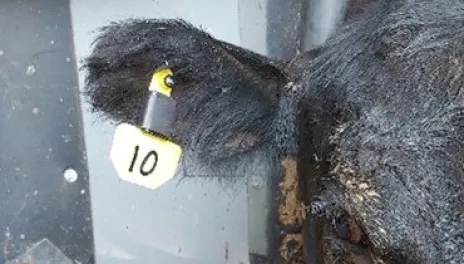High Tech Livestock Unit
It has been a bustling 2023 at the Carrington REC Livestock Unit and the pace won’t slow in 2024. With ground being broken and cameras being setup, the CREC Livestock Unit has begun its shift towards precision technology research.
Over the last two legislative sessions, the CREC has received funding for four projects to further develop the Livestock Unit. Recently, concrete has been poured for the livestock support facility. This facility will provide dedicated lab space for nutrition, blood, and fecal sample preparation and meeting space for livestock-focused round-table meetings.
We are currently in the development stage on the remaining three projects. We have been at the drawing board designing a monoslope feedlot building. Entirely confined under roof, the facility will house up to 120 head of calves fed with smart feeder and water technologies. Using smart feeders and waterers will allow us the ability to look deeper into individual intakes, feeding and drinking behaviors, and changes in pecking order within the pen. Additionally, a commodity storage building is also on the design board.
Throughout the summer, research was conducted to identify differences in behavior and performance of finishing steers due to the difference between cement and dirt surface pens. Our 16 bison pens, which are located on the south side of the unit, are half dirt surface and half cement. We placed temperature loggers on the surface (protected from hoof action) and calves were outfitted with accelerometer ear tags. The accelerometers collected movement through changes in acceleration rather than GPS location, identifying changes in behavior due to disease, parturition, and managerial issues. From June to October, we detected higher surface temperatures in the dirt compared to cement lots. Behavior and performance data are still being analyzed.
Finally, this winter we are beginning a new project aimed at predicting fat thickness using video cameras. Recently, we were awarded funding to setup cameras at the CREC, Central Grasslands REC, and Hettinger REC to video finishing calves and lambs. The goal of the project is to train computer models to aid in identifying backfat thickness and market readiness in fat steers and lambs. Recent research in other parts of the US successfully used camera imagery to predict body weight and feed intake of feedlot animals, and aided in sorting uniform pens of animals. Our research aims to go one step further, allowing feedlot operations the ability to send uniform sets of animals to harvest, thus capitalizing on premiums afforded by packers while minimizing discounts.
With all that is going on at the Livestock Unit, you are always welcome to stop in to see the progress on the building projects.
Colin Tobin, Ph.D.
Colin.Tobin@ndsu.edu
Animal Scientist
